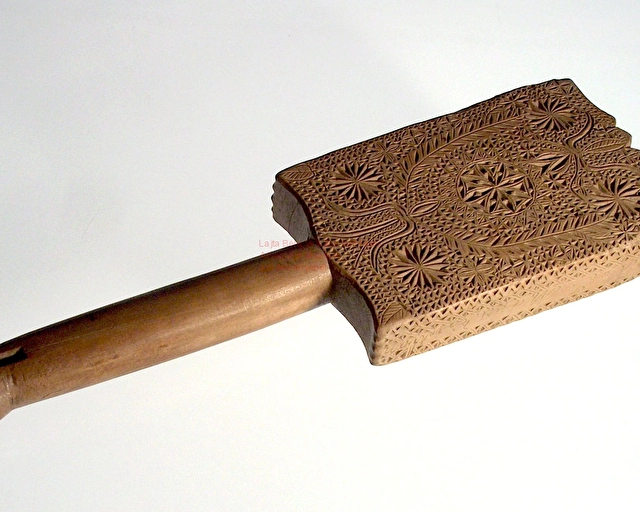Objects from the collection of Béla Lajta

The folk art exhibition organised by the Hungarian Society of Applied Arts in 1908 featured a number of items from Béla Lajta’s personal collection – three washing mallets among them. These items are closely connected to the woodcarvings from Kalotaszeg, Transylvania, earlier owned by Dezső Malonyai, Elek Koronghi Lippich and Géza Maróti which they collected while compiling the volume dedicated to the Kalotaszeg region of the book series, ’The Art of the Hungarian People’. The other identified item of Lajta’s collection, a 1810 painted chest had been purchased by Lajta in 1908 or 1909 in Kalotaszeg, as Lajta’s widow recalled. In the bequest of the architect’s monographer Ferenc Vámos there were about a dozen photographs showing the embroidered Slovak headscarves that had once been in Lajta’s possession. An extensive collection of folk artefacts – the likes of which could be seen in the flats of other artists and affluent citizens of the time – was part of Lajta’s immediate surroundings right until his death, as the heritage inventory reveals.
The photograph depicting ’the study’ of Béla Lajta in 1911 shows a very different type of interior, including, among other items, a painting by then up-and-coming artist József Egry, an African tribal statue and a set of antique Jewish liturgical objects. The pastel by Egry and the Bamana (Bambara) ‘do nyéléni’ statue from Mali could possibly get into his possession as a result of the exhibitions of the ’Művészház’ (House of Artists) gallery, where József Egry featured with a number of paintings that received considerable attention in 1909 and 1910. The standing female statue, on the other hand, is very similar to the artefact displayed at the exhibition of ’Oriental Art’ in Művészház in April, 1911, which was a milestone on the way of presenting African sculpture as an art form. Its owner at the time was Miklós Vitéz, a friend and fellow collector of the architect Lajos Kozma, who was a key member at the time in Lajta’s team. The two Jewish liturgical artefacts were donated to the newly founded Jewish Museum already in 1911 – the pair of Torah crowns by Béla Lajta, the paroket (curtain for the Torah shrine) by baron József Hatvany.
As for the furniture in the photo, two items can be identified: the chair on the right at the far end of the room is one of the chairs that had been made for the Wechselmann Educational Institute for the Blind, while the turn-of-the-century British writing cabinet was – according to the family legend – a gift from its presumed designer, H. M. Baillie Scott.







































